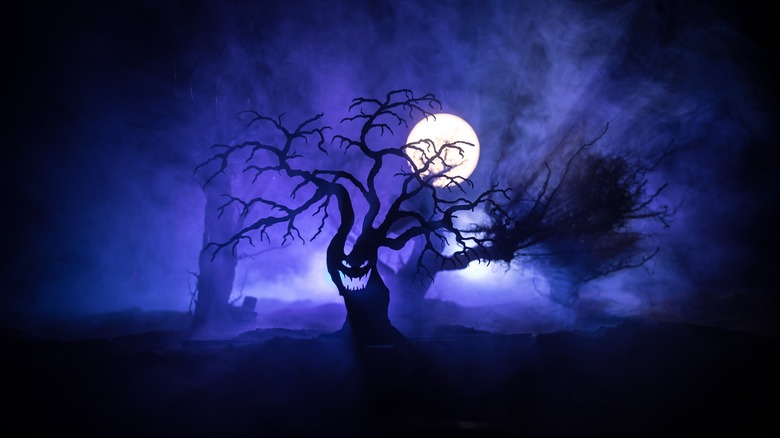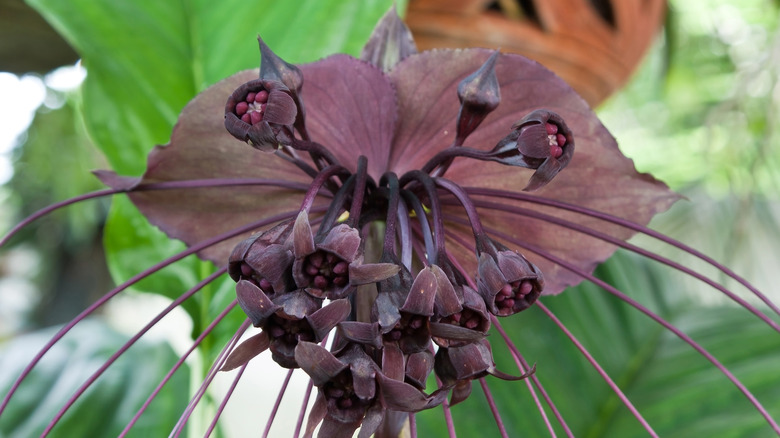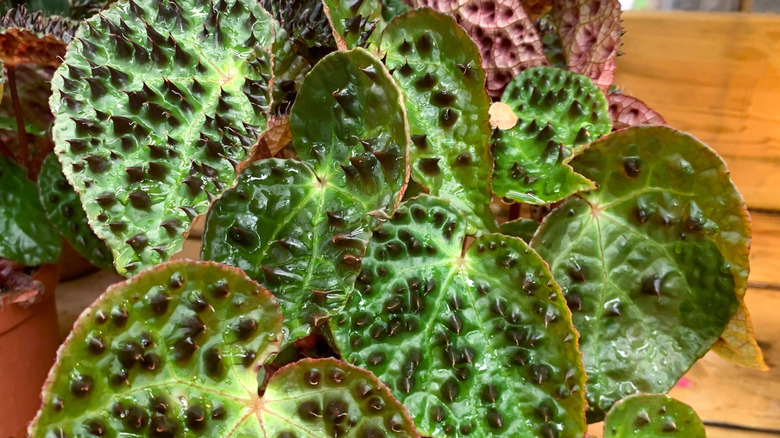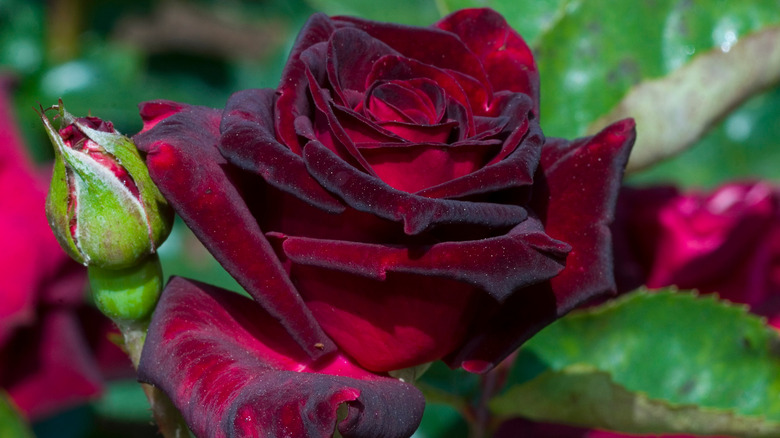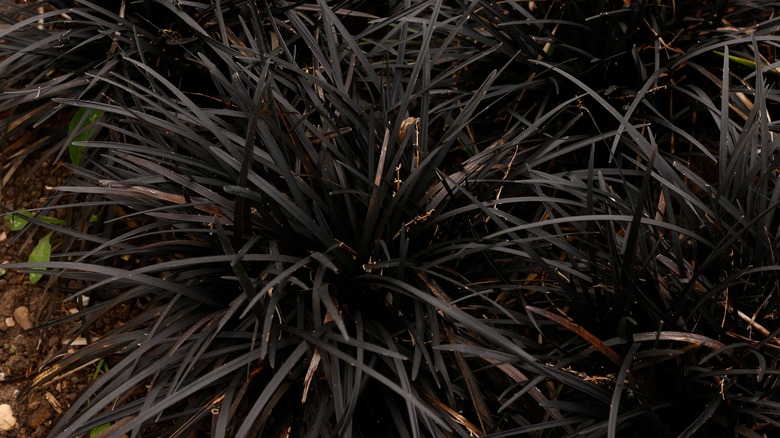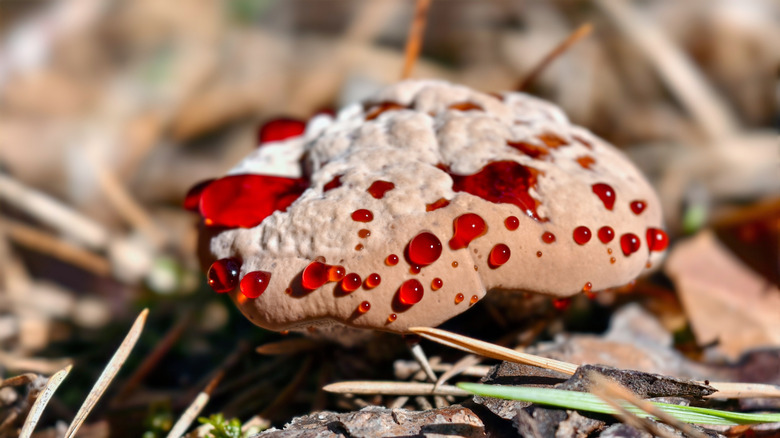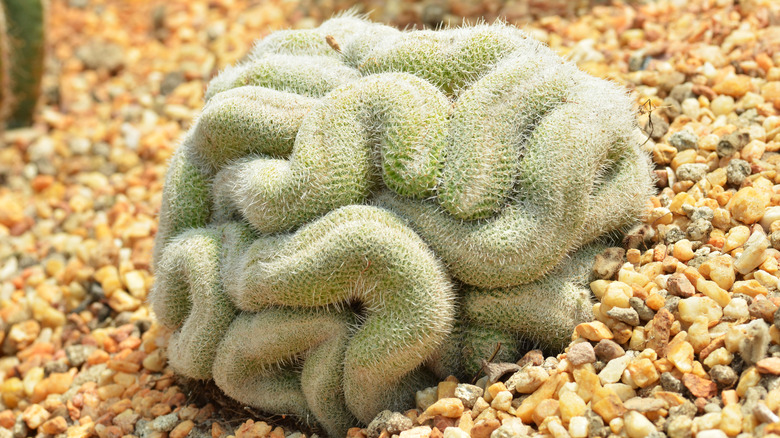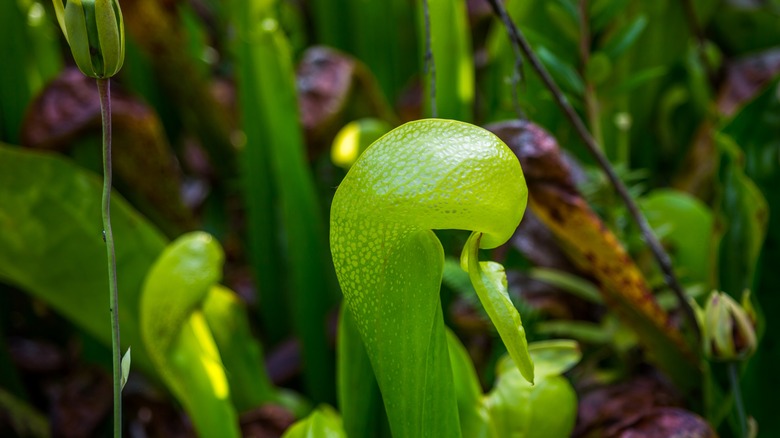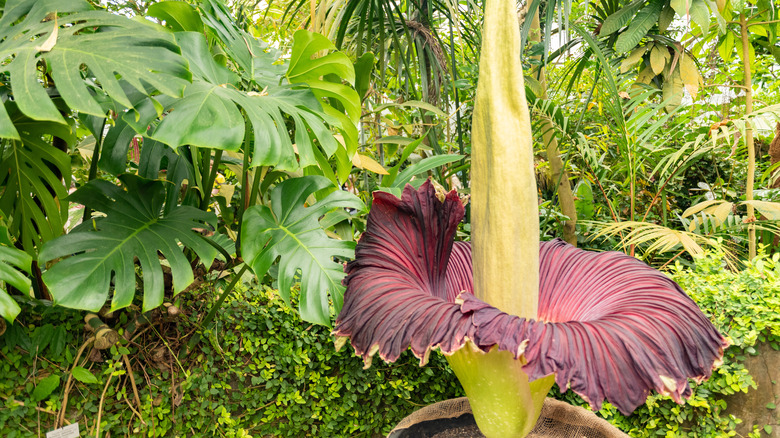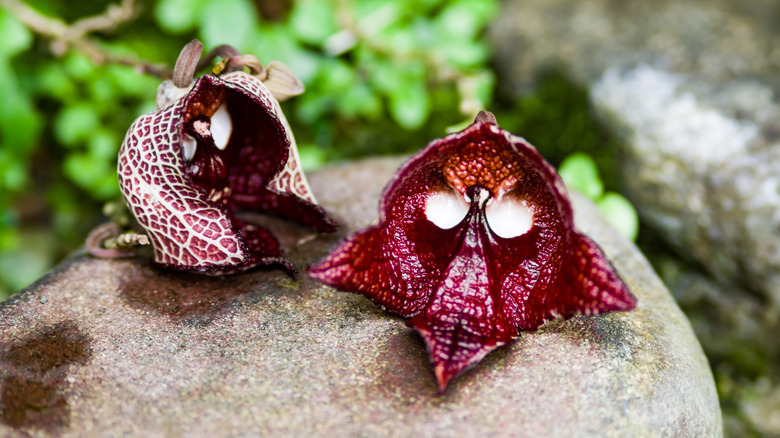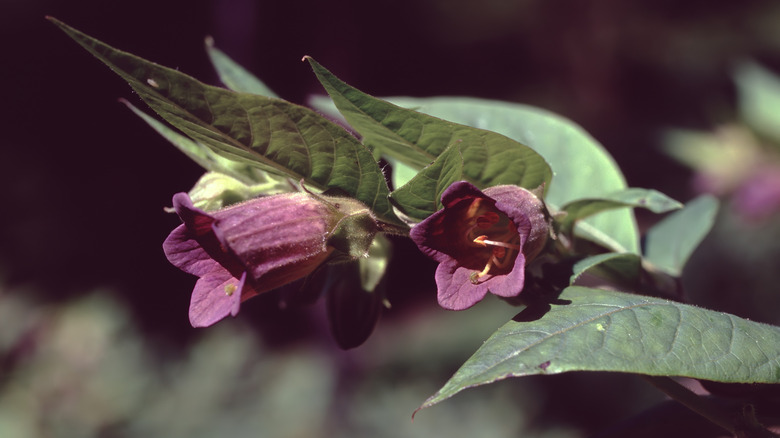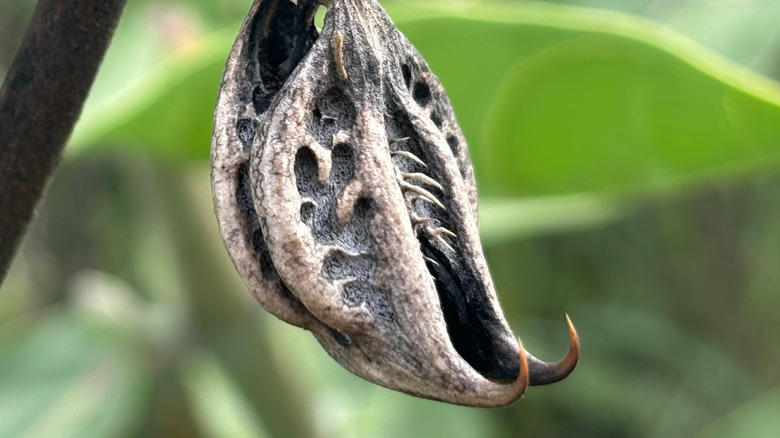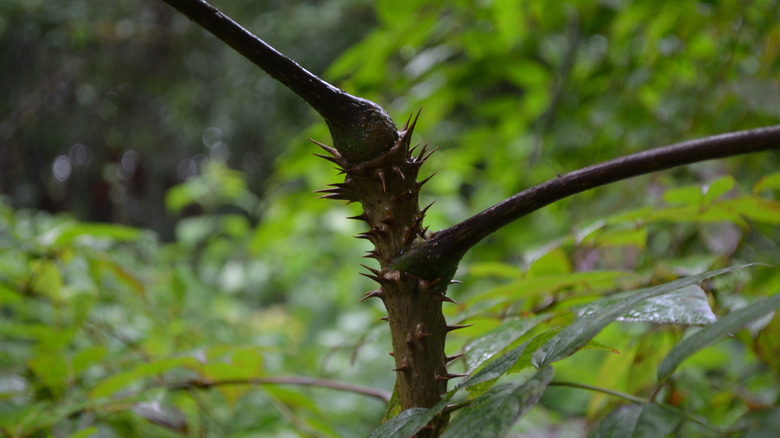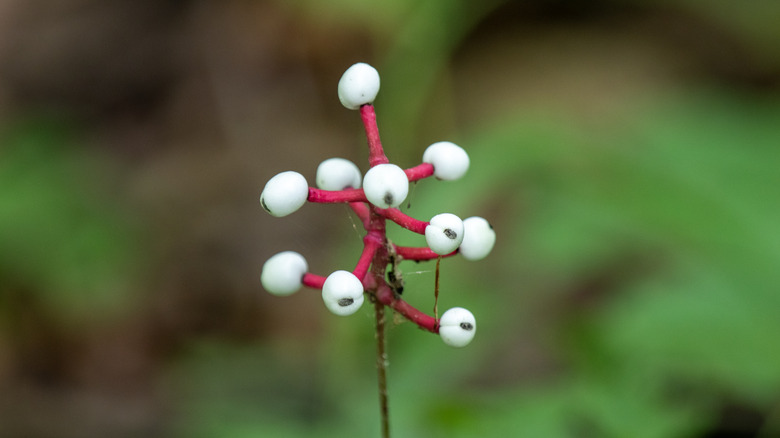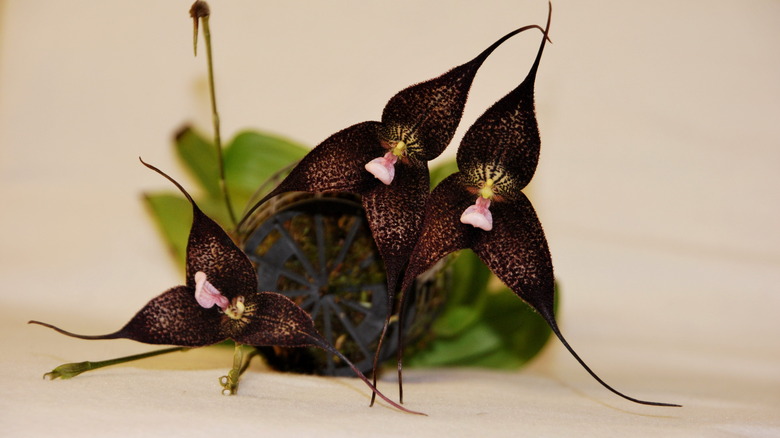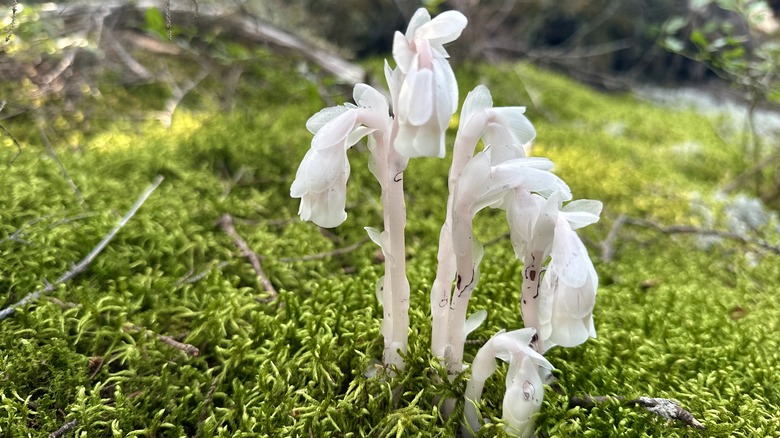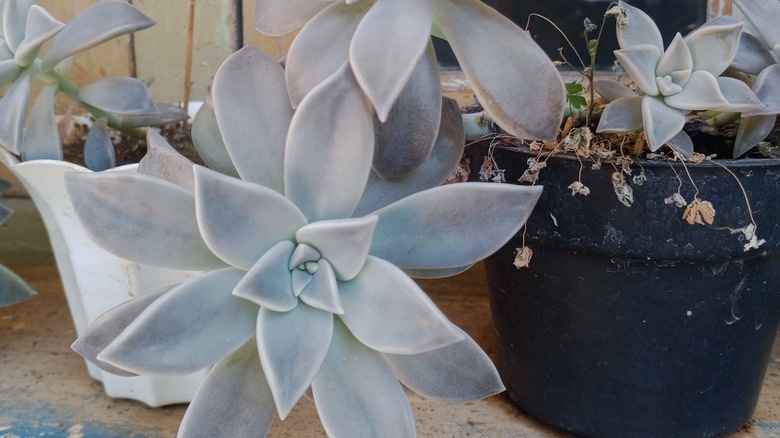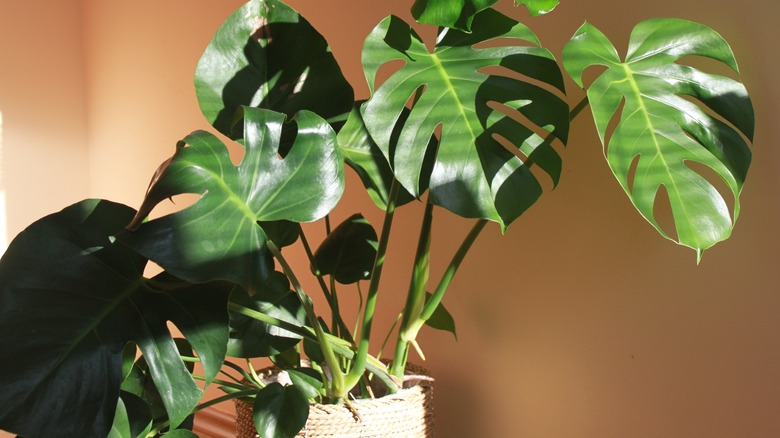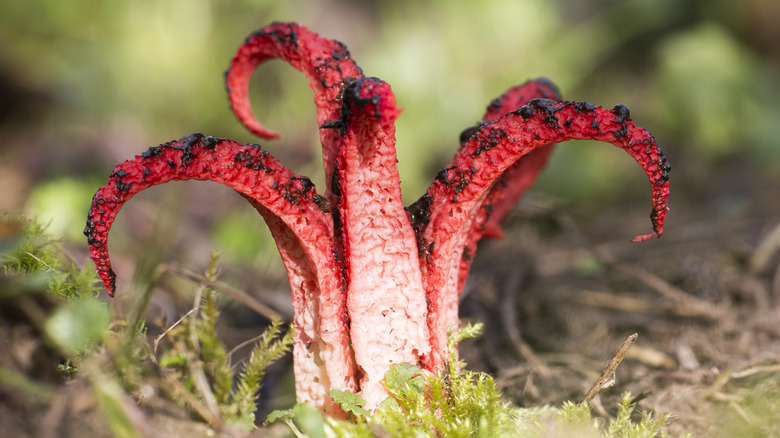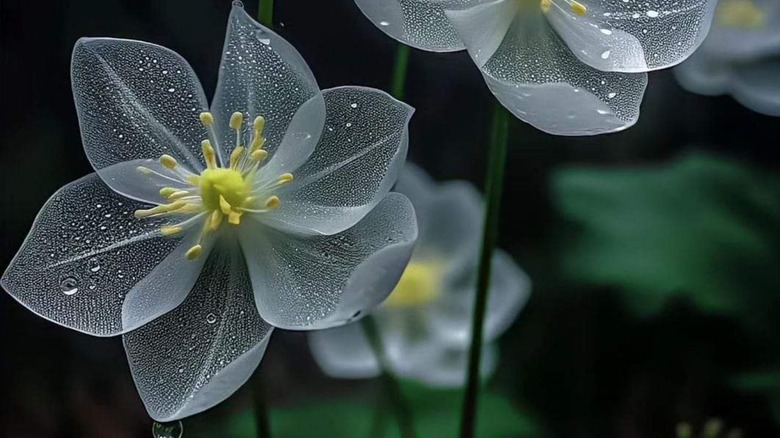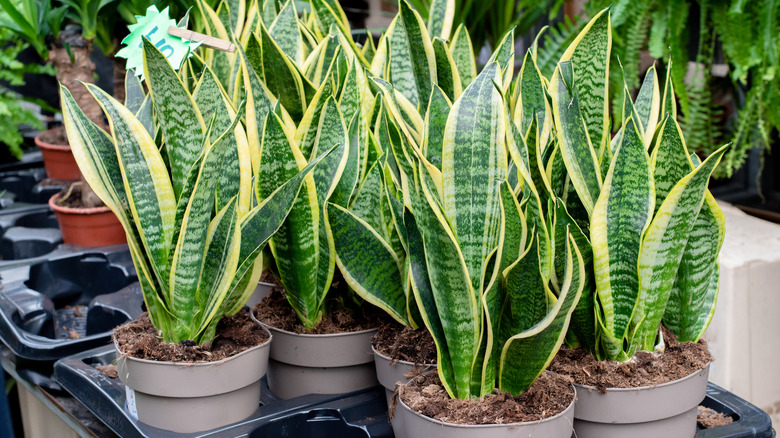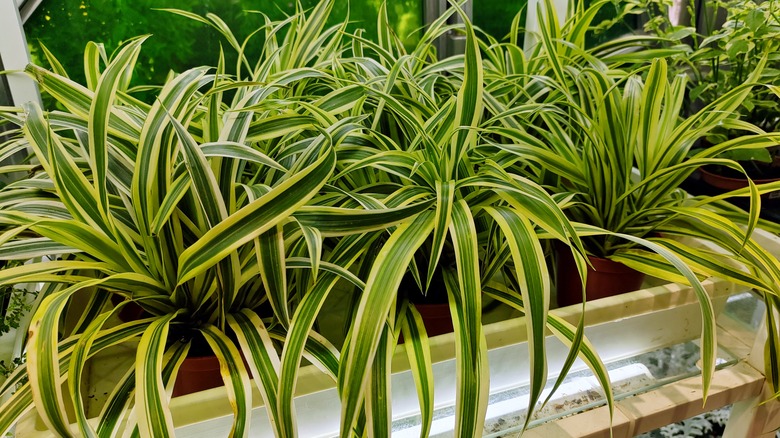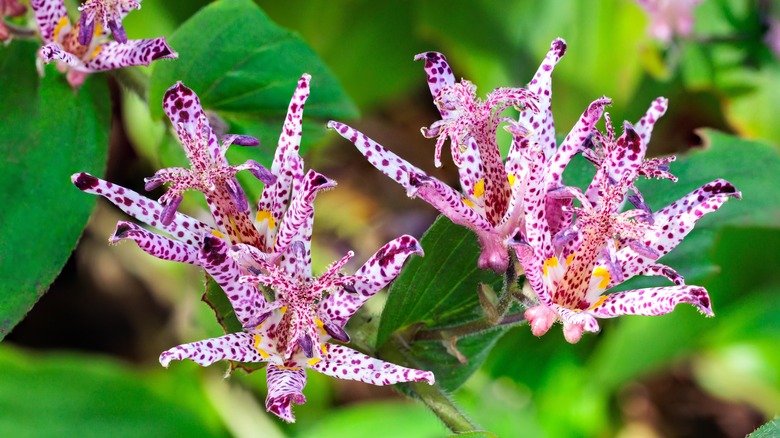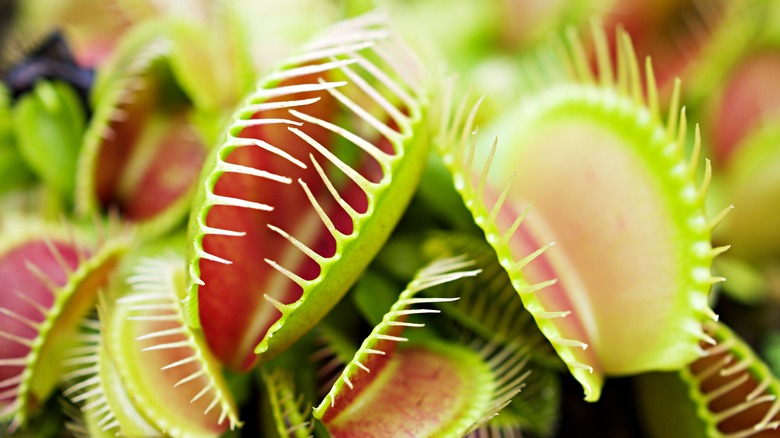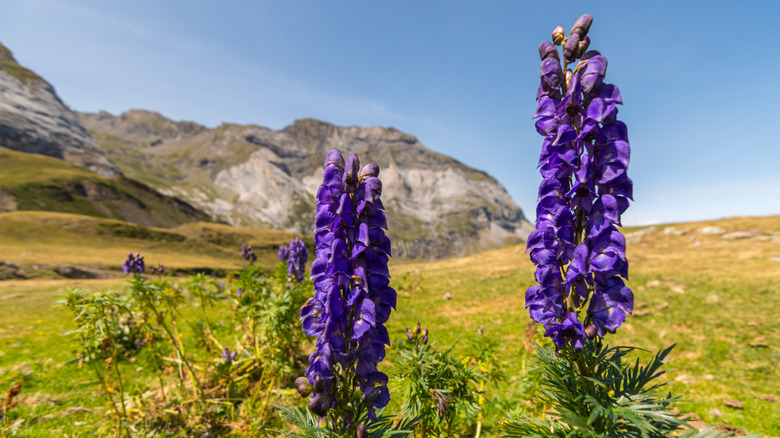24 Real Plants With Names That Sound Scary
Whether you're spooky season is about visiting the most haunted houses in America, or making dreamy little herb brooms to decorate for the fall season, cold weather means it's time to get in the mood. These real plants with scary names can do just that. Of course, this list is mostly just for fun, but you may find a few plants that would actually make a stunning addition to your Halloween decor, like the bat flower, fierce begonia, black baccara roses, or black mondo grass.
While most of these plants just sound scary, some of them, like the corpse flower or deadly nightshade, are actually scary enough to keep out of your garden at all costs. Most of them, however, have earned their names from the unique features, characteristics, or their creepy appearance that make them stand out from any other type of plant in the garden. In any case, these plants with scary names are sure to help you kick off this year's spooky season, and with names like the Darth Vader plant to the toad lily, and everything in between, there's something on the list for everyone. Use them to create a fun garden-themed Halloween trivia game, inspire your scary decor, or just enjoy these crazy plants that actually exist!
Bat flower
The bat flower (Tacca spp.) doesn't just have a spooky name; it also has a rather strikingly scary (or interesting) appearance. This tropical perennial can grow in USDA Hardiness Zones 10 to 12, but it is native to Asia. In this case, the name is not just for fun; it describes the black "wings" of the flower, which spread wide like bat wings when the flower blooms. It can bloom up to 8 times per season. The bat flower is considered a collector's plant due to its unique appearance.
Fierce begonia or troll begonia
The fierce begonia (Begonia ferox), also known as the troll begonia, may not have the most terrifying name, but it makes up for it with the deadly-looking spikes that form on the leaves. This perennial, succulent house plant grows in a rather haphazard arrangement with asymmetrical leaves that feature black trichomes, or spikes. It grows best in zone 10, but can be grown indoors in a terrarium as long as temperatures stay above 60 degrees Fahrenheit. They may sometimes be available at local garden centers, but are generally easier to find online.
'Black Baccara' roses
'Black Baccara' roses (Rosa 'Black Baccara'), are a type of hybrid tea rose that features deep red, almost black, velvety petals. They can grow in zones 5 to 9 and are the perfect addition to your spooky season decor or Halloween garden. The name itself is a bit of a mystery, which only adds to the allure. There is no consensus on where the "Baccara" part of the name came from, but it is likely derived from a town in France, where the flower was cultivated in the early 2000s.
Black mondo grass
If you're looking for spooky plants that will look right at home with your Halloween decor, black mondo grass (Ophiopogon planiscapus 'Nigrescens') is a great option. The name is a bit misleading, but not in the way you might think; this is a naturally black colored plant. However, it's not actually a grass; it's a type of perennial lily that grows in zones 6 to 9. Not only does the name "black mondo" indicate a dark, creepy plant, but the scientific name is also scary for people who don't like snakes. Ophiopogon translates to "snake beard" in Greek.
Bleeding tooth fungus or devil's tooth
The bleeding tooth fungus (Hydnellum peckii), also known as devil's tooth, is the first on the list that is not only scary but also kind of disgusting. This nasty-looking mushroom features monster-like teeth that literally bleed red fluid – though it's not truly blood — when damaged. The name and appearance aren't the only scary things about it, either. There are spooky stories and superstitions surrounding these creepy mushrooms.
Brain cactus
The brain cactus (Mammillaria elongata cristata) is exactly what it sounds like, a prickly cactus shaped like a brain. The ridges of the cactus grow in twisted, curled clusters that make the plant look exactly like that vital organ. The short spikes aren't very sharp, but they completely cover the plant, giving it a pale color that makes it look even more spooky. They can be grown in pots or in the ground in zones 9 to 11, producing pink flowers in the spring.
Cobra lily
The cobra lily (Darlingtonia californica) is the first carnivorous plant on the list, which should be enough to make it scary. But the plant's resemblance to a standing cobra snake is sure to send shivers down the spine of snake-fearing individuals. This perennial is native to bogs and can grow in zones 7 to 10. The plant grows with tall tubes that have a large hood at the top, which secretes nectar to attract insects. Then, the insects get trapped inside the tube and are digested by the plant.
Corpse flower
The corpse flower (Amorphophallus titanum) is one of the most interesting, and most disgusting, plants on the list. Unlike many others, the corpse flower does not get its name from how the plant looks, but how it smells. Luckily, the plant only emits the scent of rotting flesh for about 24 hours every few years when it blooms. This is not a plant that you would generally grow at home. Aside from the disturbing features, the plant is notoriously difficult to care for. It is also on the list of endangered plants in the wild.
Darth Vader plant
The Darth Vader plant (Aristolochia salvadorensis) is a fun addition to the list with small blooms that look just like Darth Vader's mask. The plant grows in tropical rainforests, but could be cultivated in greenhouses with high humidity. Some plants in the Aristolochia genus produce the same odor as the corpse flower, but there is limited information regarding the scent from the Darth Vader plant. This unique plant is a flowering shrub that produces blooms on horizontal shoots that grow on the ground.
Deadly nightshade
Deadly nightshade (Atropa bella-donna) has a scary name that it lives up to because it is exactly what it sounds like: a deadly plant. Also known as Belladonna, deadly nightshade is a beautiful, but highly toxic plant you probably wouldn't want mixed in with your Halloween decor. This herbaceous perennial that grows in zones 5 to 9 is widely recognized as a poison. In the spring and summer, deadly nightshade blooms with deep purple flowers and dark, poisonous berries.
Devil's claw
Devil's claw (Proboscidea parviflora) may sound demonic, but it is actually a very useful medicinal plant that is part of the sesame family. It is an annual plant, though some varieties are perennials that grow in zones 5 to 8. The devil's claw produces small white and pink tubular flowers. The name is derived from the shape of the seed pods, which look like a creepy claw, especially when they dry up. The claws are very sharp, and the plant secretes a rather unsavory odor, which also contributes to the name.
Devil's walking stick
Another devil-inspired name, the devil's walking stick (Aralia spinosa) is named for the sharp, spiky stems. These small, perennial trees, which grow in zones 4 to 9, can typically reach 10 to 15 feet tall. In the summer, they produce small white blooms that later become clusters of purple fruit. The fruit is mildly toxic to humans, but provides a food source for wildlife. The plant also attracts pollinators like butterflies and songbirds. The bark can be harvested for medicinal uses, such as treating infections or improving skin conditions.
Doll's eye
If dolls give you heebie-jeebies, the appearance of the doll's eye plant (Actaea pachypoda) will probably freak you out as much as the name. The doll's eye, also called white baneberry, is a perennial that grows in zones 3 to 8. It produces white berries with a purple dot on bright red stems, which is how it got the name doll's eyes. The entire plant is toxic to humans, livestock, and pets. Plus, it can attract mice and moles to your yard, so it's probably not something you would want to plant in your garden. It can, however, attract birds and pollinators, like bees.
Dracula orchids
Here's a more fun one compared to some of the deadly or disgusting plants on the list. Dracula orchids are one of the only plants on the list that do not get their name from how they look or smell. Instead, Dracula orchid is the actual scientific genus of a group of plants, although the long petals do look a bit like fangs. In some areas, the plant is actually called a monkey orchid because people say the flower looks like a monkey's face. The genus Dracula is characterized by long, slender tails and cool climate habitats.
Ghost pipes
Ghost pipes (Monotropa uniflora) are small perennial flowers that grow in zones 4 to 11. They have been used medicinally for nervous system treatments in traditional medicine practices. As the name suggests, the entire plant, including the stems, leaves, and flowers, is white. Each plant has a single flower, but they grow in clusters. The leaves look like scales growing on the stem, just above the flower, which hangs below the leaves like a bell. It only grows at the base of trees because it needs the nutrients from the tree roots to survive.
Ghost plant
Not to be confused with ghost pipes, the ghost plant (Graptopetalum paraguayense) is a greyish-white perennial succulent plant that grows in zones 9 to 11. Despite the spooky name, this is one that is welcome in most gardens. It can grow in the ground or in pots and can reach 1 foot tall and 2 to 3 feet wide when fully mature. In hot, dry weather, the whitish leaves can become a deeper green with purple tips. If they grow in partial shade, however, the blue hues can get deeper, making it look more ghost-like.
Monstera plant
The monstera (Monstera deliciosa) plant, also called the Swiss cheese plant, may sound monstrous, but it is actually an interesting houseplant that you can easily grow in your home under the right conditions. In the wild, monstera grows in zones 10 to 12 and can grow to be up to 70 feet tall. As a houseplant, you can expect to have growth up to 8 feet tall if you provide the plant with something to climb. If ingested, the plant is toxic to both humans and pets, so be careful if planting in a home with children or animals.
Octopus stinkhorn
Octopus Stinkhorn (Clathrus archeri), also known as devil's fingers, is a type of fungus that features haunting red tentacles or finger-like growths that sprawl in every direction. To make matters worse, the fungus smells like death, emitting a rotten odor to attract flies and other insects. It's not the type of plant you can grow in your garden (not that you would want to) or conjure up for a Halloween party. It is a rare mushroom that is only found in parts of the UK and Australia.
Skeleton flower
The Skeleton flower (Diphylleia grayi) looks like an ordinary white flower most of the time, but it gets its name from the unique ability to turn transparent in the rain. The intriguing perennial grows in zones 4 to 7, and you may be happy to know you can grow them in your garden. They can be planted in the ground in partial or complete shade with humus-rich soil or in containers. They are relatively easy to care for, with minimal maintenance required aside from a single pruning in the spring.
Snake plant
If you can relate to Indiana Jones every time he sees a snake, you may be a bit freaked out by the snake plant (Dracaena spp.), but don't worry, these plants don't attract snakes. They are called snake plants because their long, striped leaves look like snakes. These succulent plants are commonly grown as houseplants because they are ridiculously easy to care for and difficult to kill. Because they can spread quickly through underground runners, it is best to only plant them in containers.
Spider plant
Similar to the snake plant, the spider plant (Chlorophytum comosum) is another houseplant that is named for its resemblance to the creepy crawly arachnids that so many people dislike. This is another easy-to-grow houseplant that is most commonly grown in containers indoors. The leaves can grow up to 2 feet long in every direction, just like spider legs. Unlike the snake plant, however, the spider plant can be grown outdoors in zones 9 to 11.
Toad lily
The toad lily (Tricyrtis formosana) may sound nasty, but it is a great plant to add to your Halloween garden, especially if you are going for a witchy vibe. Not to mention, this exotic plant adds color to your garden while attracting hummingbirds. This perennial flower can grow in zones 4 to 9. It got the name toad lily because of the wart-like spots on the petals that resemble the warts on a toad. Even so, the gold, purple, red, or white flowers that bloom in the summer and fall are much more beautiful than most toads.
Venus flytrap
The name Venus flytrap (Dionaea muscipula) may not be all that scary to most, but a spooky plant list wouldn't be complete without it. This carnivorous plant has open "jaws" with long "teeth" that patiently await insect activity. Once an insect does land in the "mouth," the jaws snap shut, trapping the prey. Because of its freaky nature, the Venus flytrap inspired "Little Shop of Horrors," a campy musical about a plant from outer space that grows so large, it eats people.
Wolfsbane
The final plant on the list is a classic Halloween-themed plant that strikes fear in the hearts of one of the original creatures of the night: werewolves. According to many legends dating back to ancient Greece, wolfsbane (Aconitum spp.), also known as monkshood, is so poisonous that it can harm supernatural creatures. Some legends say it is used by witches and sorcerers for various spells and potions. The plant got its name in ancient Greek times when hunters used it to poison wolf bait. It is highly toxic to animals and humans.
